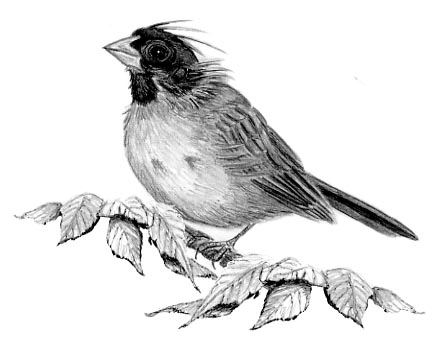
Dear Bird Folks,
Early this summer I noticed that the Red Foxes in my area were all ratty looking. I assumed that they had some kind of mange. But recently I,ve noted that my feeder birds are also ratty looking and now I’m starting to worry. Could there be an illness spreading through the local wildlife or is acid rain taking its toll on their fur and feathers?
-Erica, Lenox, MA
Thanks a lot Erica,
Thanks for bringing up “acid rain.” You know, I had totally blocked acid rain out of my mind. Like my thinning hair, I had hoped that if I just ignored acid rain the problem would fix itself. Now, thanks to you, acid rain is back. Of course, acid rain has never gone away and continues to be a serious problem, but not nearly as serious a problem as thinning hair. And by the way, none of this has anything to do with your ratty looking birds.
Every spring we get lots of calls about “mangy” foxes. It seems we are incharge of the fox population too. Oh, the pressure. Yes, foxes can contract mange, which will cause their fur to fall out. However, most mangy looking foxes that we see in the spring, are simply shedding their thick, handsome winter coats and are now walking around with their summer haircuts. And like most summer haircuts, and we’ve all had them, they can be both frightening and embarrassing at the same time. Foxes mate in the winter, when they look their best. By spring their winter coats are gone and the foxes appear thin and unkempt, but since they are dealing with a den full of unruly pups, they could care less what they look like.
Many birds on the other hand look their best in the spring. They arrive on the breeding grounds sporting the latest in fashion trends which, luckily for them, is the same every year. However, not all birds have a spring molt, but just about all molt at the end of the summer. It is during this molt that they can look a bit shabby. The fall molt is a complete molt; all of the feathers get replaced. The entire outfit is dumped, right down to the socks and underwear.
Molting is a tricky period for birds. It has to be accomplished before the bad weather sets in, yet they are at great risk if they give up their feathers too quickly. Without feathers birds would not only be naked, which might be upsetting to the conservative crowd, but they are unable to fly. So instead of a rapid feather loss, songbirds lose their feathers gradually and orderly. Flight feathers are lost a few at a time. Only when the replacement feathers grow back will another batch of old feathers drop out. That way the birds may continue to fly, aren’t running around naked and are able to avoid being picketed by conservatives.
In the world of birds, diversity is great and methods of survival are varied. A songbird’s molt is gradual, but waterfowl are far too impatient for a prolonged feather loss. Loons, geese and ducks drop their feathers much more quickly. Water birds tend to have a heavier body weight to wing ratio (i.e. they’re porkers), so even a few missing flight feathers would hinder their flying ability. Instead, ducks go off to secluded lakes and molt fairly rapidly. During this short period they are completely unable to fly. Loss of flight would be fatal for a songbird, but the ability to swim and dive protects the water birds from most predators, except for hawks, the occasional snapping turtle and, of course, Nessie.
Apart from appearing a bit scruffy, most songbirds’ fall molting is uneventful and goes unnoticed. There are a few exceptions, however. The ones that we get the most calls about are Blue Jays or Cardinals, that for some unknown reason, lose all of their head feathers at once. The bald Blue Jays of August cause more people to freak out than a Steven King movie does. At our shop we have a window bird feeder that attracted a cardinal with absolutely no feathers on the top of its head. No matter how I tried to explain to this one customer that the bird was merely a molting cardinal, she was convinced that the weird looking bird was a “baby vulture.” Fine, whatever.
What you are seeing, Erica, with either the foxes or the birds, is their annual change of clothes. Their odd looks have nothing to do with acid rain. A few weeks from now the birds in your yard will have a thick, fresh layer of new feathers. Too bad the same thing won’t happen to my thinning hair. But at least no one has called me a “baby vulture.” Not yet.